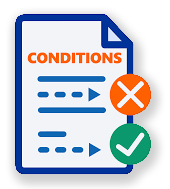We post news and comment on federal criminal justice issues, focused primarily on trial and post-conviction matters, legislative initiatives, and sentencing issues.

RETROACTIVE GUIDELINES BECOME EFFECTIVE – WHAT NOW?
 Tomorrow, the first Guidelines amendments in five years will become effective, including the two retroactive criminal history Guidelines, the first retroactive guidelines in almost a decade. Although the Sentencing Commission adopted the new compassionate release Guideline – USSG § 1B1.13 – by a 4-3 vote, a Congress preoccupied with Ukraine, government funding, and a House of Representatives paralyzed by lack of a Speaker, was not motivated to use its veto.
Tomorrow, the first Guidelines amendments in five years will become effective, including the two retroactive criminal history Guidelines, the first retroactive guidelines in almost a decade. Although the Sentencing Commission adopted the new compassionate release Guideline – USSG § 1B1.13 – by a 4-3 vote, a Congress preoccupied with Ukraine, government funding, and a House of Representatives paralyzed by lack of a Speaker, was not motivated to use its veto.
I’ve gotten a lot of questions about the two retroactive Guidelines. Here’s a little guidance.
A Guidelines amendment doesn’t help anyone who’s already been sentenced unless it is designated as being retroactive. There haven’t been many over 34 years. If the amendment is retroactive, it will be listed in USSG § 1B1.10(c).
The two retroactive Guidelines are found in Amendment 821. Part A of the amendment cuts “Status Points” – the two points added to criminal history scores when the offense was committed while on probation, parole or supervised release from another crime – by one point for people with seven or more criminal history points and eliminates them altogether for people with six or fewer criminal history points.
There are no eligibility limitations under this part of the amendment based on crime type, violence, or weapons but these are factors a court may consider in determining whether to grant a sentence reduction.
Part B of the Amendment creates a new USSG § 4C1.1 that provides a decrease of two offense levels for “Zero-Point Offenders” (no criminal history points) whose offense did not involve specific aggravating factors:
• No adjustment under USSG § 3A1.4 (terrorism);
• Defendant did not use violence or threats of violence in the offense;
• The offense did not result in death or serious bodily injury;
• The offense of conviction is not a sex offense;
 • Defendant did not personally cause substantial financial hardship;
• Defendant did not personally cause substantial financial hardship;
• Defendant did not possess, receive, purchase, transport, transfer, sell, or otherwise dispose of a firearm or other dangerous weapon (or induce another participant to do so) in the offense;
• The offense is not covered by USSG § 2H1.1 (involving individual rights);
• Defendant did not receive an adjustment under § 3A1.1 (Hate Crime Motivation or Vulnerable Victim) or § 3A1.5 (Serious Human Rights Offense); and
• Defendant did not receive an adjustment under § 3B1.1 (aggravating role) and was not engaged in a continuing criminal enterprise under 21 USC § 848.
People with release dates before February 1, 2024, will not be able to receive a reduction in their sentences.
To get the retroactive Guideline reduction, you file a motion under 18 USC § 3582(c)(2). There’s no exhaustion of administrative remedies – no need to send a copout to the warden – before filing. You simply write a motion and file it.
A motion should first show the court that you are eligible for the reduction. That’s not always a slam dunk. For the status point reduction, if taking off the one or two points you will save does not drop you to a lower Criminal History Category, “status point” retroactivity won’t help you. For the “zero point” reduction, you have to show that you meet the conditions.
Eligibility is a legal question. You are or you aren’t. But once the eligibility is established, it becomes a matter of the judge’s discretion. The court can give you a sentence reduction that cannot be more than the bottom of your new sentencing range. But the judge may decide to give you less than the bottom of the new range or even give you nothing at all. And what the judge decides as far as the amount of reduction you can get is unreviewable.
 For that reason, a well-written motion for sentence reduction will not only explain to the court about your history and the offense but also cite post-sentencing reasons – such as a good disciplinary record or a history of programming – that convince the court that the reduction is deserved and consistent with the sentencing factors of 18 USC § 3553(a).
For that reason, a well-written motion for sentence reduction will not only explain to the court about your history and the offense but also cite post-sentencing reasons – such as a good disciplinary record or a history of programming – that convince the court that the reduction is deserved and consistent with the sentencing factors of 18 USC § 3553(a).
A note on below-Guidelines sentences: Section 1B1.10 suggests to the court that it may grant you a reduction, but “a reduction comparably less than the amended guideline range… may be appropriate.” The Guideline gives the example of someone who was sentenced 20% below his original sentencing range. In that case, 1B1.10 suggests, “a reduction of approximately 20 percent below the minimum term of imprisonment provided by the amended guideline range… would amount to a comparable reduction and may be appropriate.”
Sentencing Law and Policy, Gearing up for new guidelines amendments becoming law and working through criminal history retroactivity (October 25, 2023)
Alan Ellis, How Zero-Point Offender Change Should Work Retroactively (October 6, 2023)
USSC, Materials Relating To The 2023 Criminal History Amendment
– Thomas L. Root


